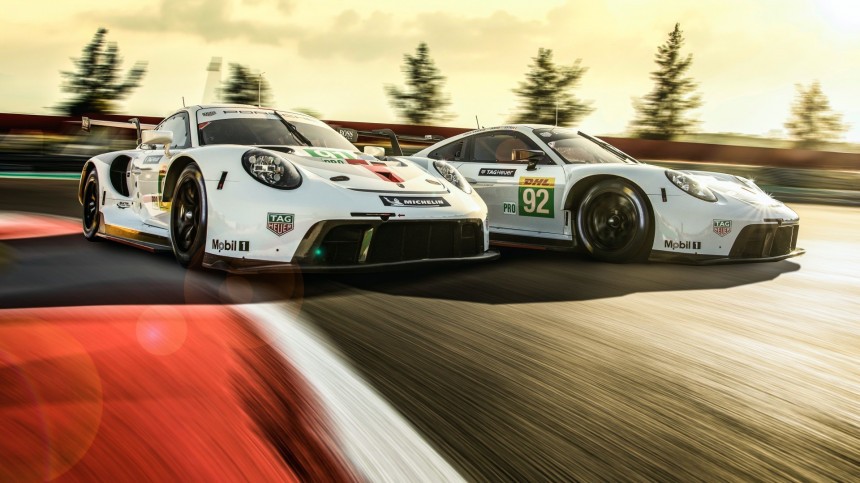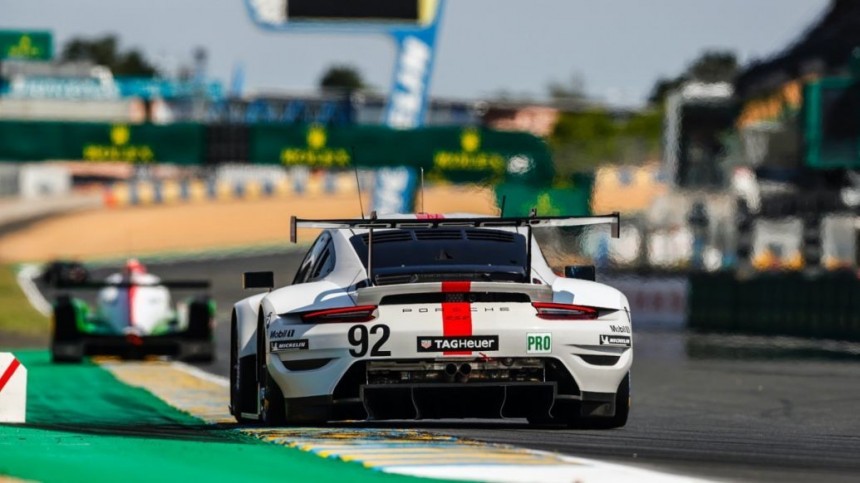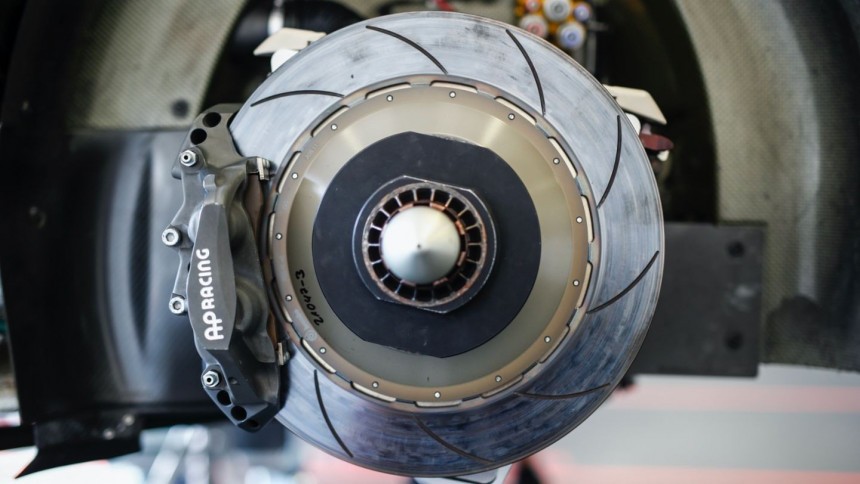The legendary 24-hour endurance race is taking place this weekend at Le Mans. This year brings the 89th edition of the greatest motorsport event in the world. Before starting in this year's competition, Porsche shared some statistics of its race cars from the last edition, which ended on September 20, 2020.
The 24 Hours of Le Mans race is a grueling endurance competition held in France, and it takes place on the Circuit de la Sarthe, which is near the town of Le Mans. Currently, the track is 13.626 kilometers (8.466 miles) long and the top tier class cars run for about 5,000 kilometers (3.106 miles). The distance is roughly eighteen times longer than the one covered by an average Formula 1 race, or six times longer than in the Indy 500.
This year's race has twelve Porsche 911 RSR-19 models entered, out of which four race in the GTE Pro class, and the rest are entered in the GTE Am class. The GTE Pro class only has eight listed cars, and half of them are Porsche models.
Two of them are entered by the Porsche GT Team, while the rest of the 911 RSRs in the race are run by privateers. The four 911 RSRs in the GTE Pro class are competing against two Ferrari 488 GTE and two Corvette C8.R models.
With all that behind us, let us look back at how strenuous the 2020 race was on the 911 RSR models. In theory, all cars that are entered the 24-hour race at Le Mans are bench and track tested before being registered to compete in the legendary race.
Even with many tests and development runs, there is no guarantee that all entered cars will finish. Along with the risk of being struck by other cars on the track, driver error and mechanical failures can happen at any time.
According to Romain Gineste, a senior performance engineer in the Porsche GT Team, their cars go through 20,000 gearshifts over the race distance. Since 2018, teams are forbidden to install a new drivetrain after the Friday of Le Mans week, which means that all cars must run the same engine and transmission from the pre-test to the end of the race.
As Gineste explained, the change in regulations brings another 7,000 gearshifts for their six-speed sequential gearboxes. Each shift takes just 15 milliseconds to happen, and Porsche switched from the pneumatically activated units of past years to an electromechanical system. That means that the straight-cut cogs are switched by a mix of electronic and mechanical parts, instead of a pressurized system that could fail after so many uses in just 24 hours.
Meanwhile, on the combustion front, the flat-six engines in the 911 RSR models fire their spark plugs approximately 28 million times. That is a lot of sparks, and each must happen at exactly the right time, otherwise, the cars will not have a chance of winning, or even being competitive for that matter. With electronic fuel injection and distributor-less setups, spark plugs working at the right time is something that we do not have to take into consideration anymore, but the systems were developed in motorsport and then became commonplace in production automobiles.
With all those sparks and combustion cycles, the cars must slow down for corners, and this is where the braking system takes a beating. Telemetry data shows that drivers depress the brake pedal about 4,000 times over 24 hours.
Braking is more serious ahead of tighter corners, such as the two chicanes on the famous Mulsanne straight, which had chicanes installed many years ago to prevent drivers of the top class from going too fast.
Porsche's data shows that the steel brake discs, and their corresponding brake pads reach temperatures more than 400 degrees Celsius (752 F). A complex ventilation system cools them down to normal a few meters after the apex of each corner.
Romain Gineste explained that the brakes are changed once throughout the 24-hour race, usually during a safety car phase, which lets the team change rotors and pads without affecting its position in the event. However, if time is short, the team goes for a front brake swap to ensure that drivers will have sufficient stopping power until the checkered flag is waved.
To keep things stable for 24 hours of racing, Porsche employs a suspension system that must withstand thousands of vibrations due to uneven road surfaces. For example, when the 911 RSR goes over a kerb, its shock absorbers are compressed twenty times per lap, and each goes through the corresponding rebounds every time.
In total, the Porsche 911 RSR's shocks take 7,000 impacts and make them go away, while Michelin racing tires also absorb their share of forces, this time in the horizontal plane. Regulations limit the teams to 60 tires for the race if the event is held in dry conditions.
Rain is common at the Circuit de la Sarthe, but other weather conditions can make the competitor's tasks trickier than a dry track, such as fog or elevated temperatures.
With all that into account, now you know more about what a car goes through when it races in what many consider to be the greatest motorsport event in the world.
This year's race has twelve Porsche 911 RSR-19 models entered, out of which four race in the GTE Pro class, and the rest are entered in the GTE Am class. The GTE Pro class only has eight listed cars, and half of them are Porsche models.
Two of them are entered by the Porsche GT Team, while the rest of the 911 RSRs in the race are run by privateers. The four 911 RSRs in the GTE Pro class are competing against two Ferrari 488 GTE and two Corvette C8.R models.
Even with many tests and development runs, there is no guarantee that all entered cars will finish. Along with the risk of being struck by other cars on the track, driver error and mechanical failures can happen at any time.
According to Romain Gineste, a senior performance engineer in the Porsche GT Team, their cars go through 20,000 gearshifts over the race distance. Since 2018, teams are forbidden to install a new drivetrain after the Friday of Le Mans week, which means that all cars must run the same engine and transmission from the pre-test to the end of the race.
As Gineste explained, the change in regulations brings another 7,000 gearshifts for their six-speed sequential gearboxes. Each shift takes just 15 milliseconds to happen, and Porsche switched from the pneumatically activated units of past years to an electromechanical system. That means that the straight-cut cogs are switched by a mix of electronic and mechanical parts, instead of a pressurized system that could fail after so many uses in just 24 hours.
With all those sparks and combustion cycles, the cars must slow down for corners, and this is where the braking system takes a beating. Telemetry data shows that drivers depress the brake pedal about 4,000 times over 24 hours.
Braking is more serious ahead of tighter corners, such as the two chicanes on the famous Mulsanne straight, which had chicanes installed many years ago to prevent drivers of the top class from going too fast.
Porsche's data shows that the steel brake discs, and their corresponding brake pads reach temperatures more than 400 degrees Celsius (752 F). A complex ventilation system cools them down to normal a few meters after the apex of each corner.
To keep things stable for 24 hours of racing, Porsche employs a suspension system that must withstand thousands of vibrations due to uneven road surfaces. For example, when the 911 RSR goes over a kerb, its shock absorbers are compressed twenty times per lap, and each goes through the corresponding rebounds every time.
In total, the Porsche 911 RSR's shocks take 7,000 impacts and make them go away, while Michelin racing tires also absorb their share of forces, this time in the horizontal plane. Regulations limit the teams to 60 tires for the race if the event is held in dry conditions.
Rain is common at the Circuit de la Sarthe, but other weather conditions can make the competitor's tasks trickier than a dry track, such as fog or elevated temperatures.
With all that into account, now you know more about what a car goes through when it races in what many consider to be the greatest motorsport event in the world.













